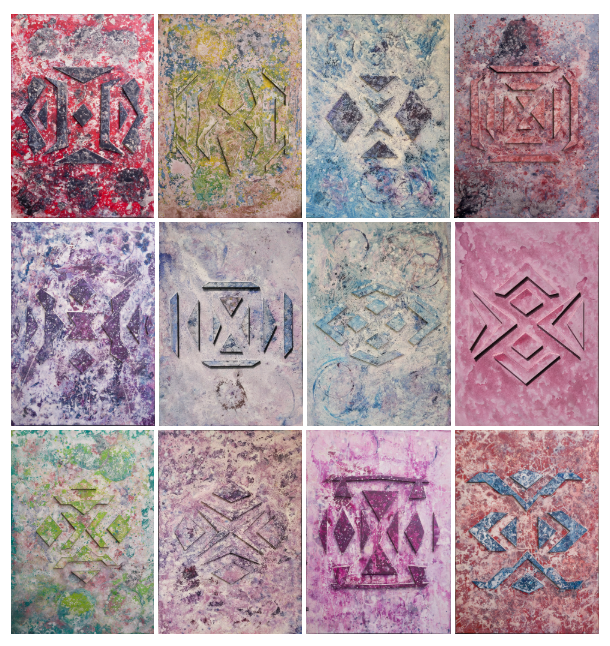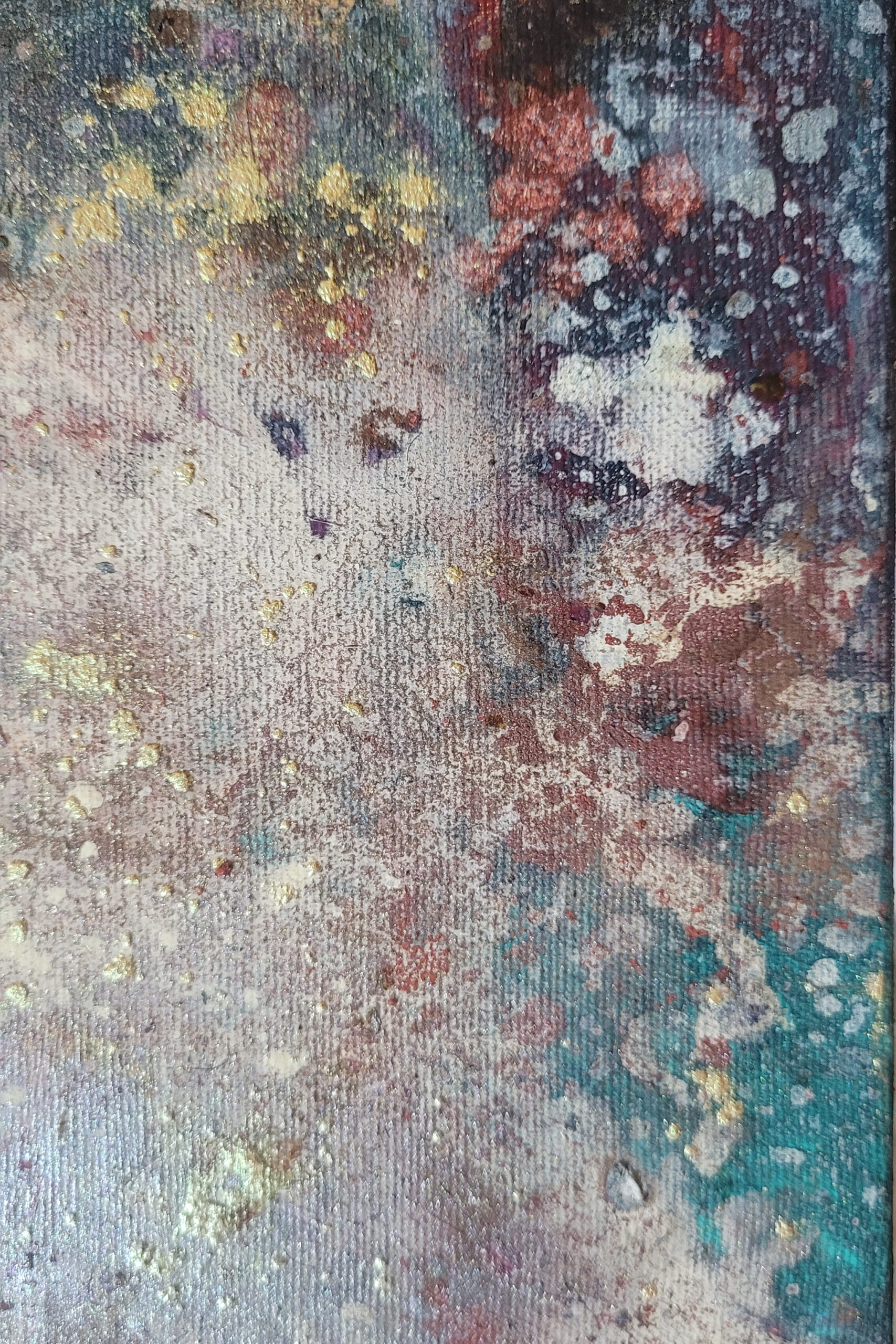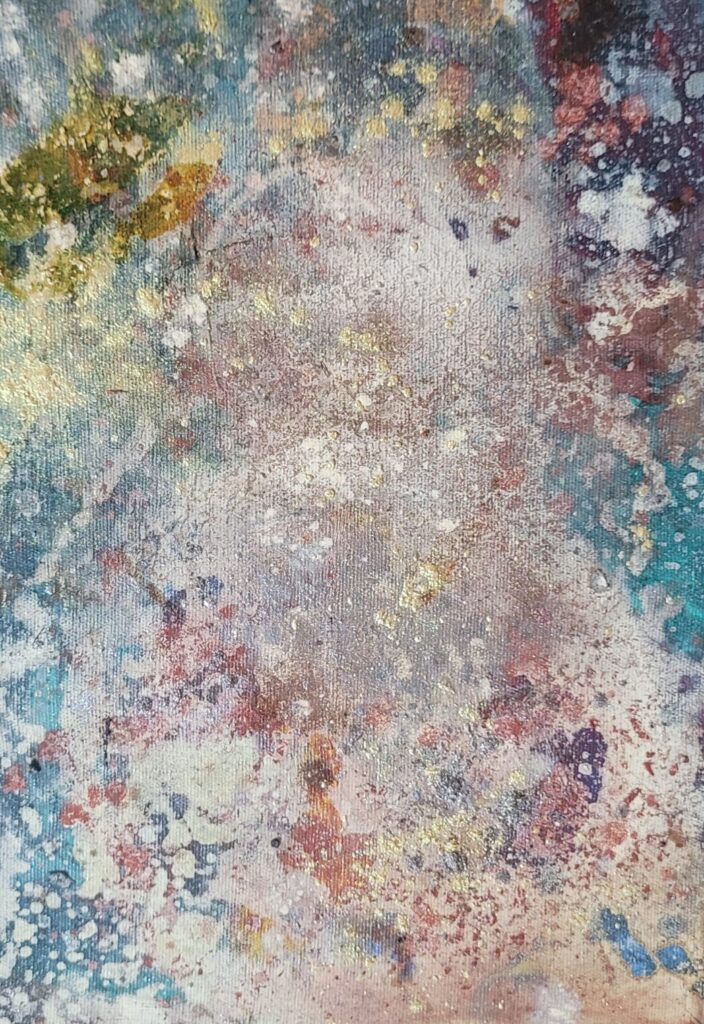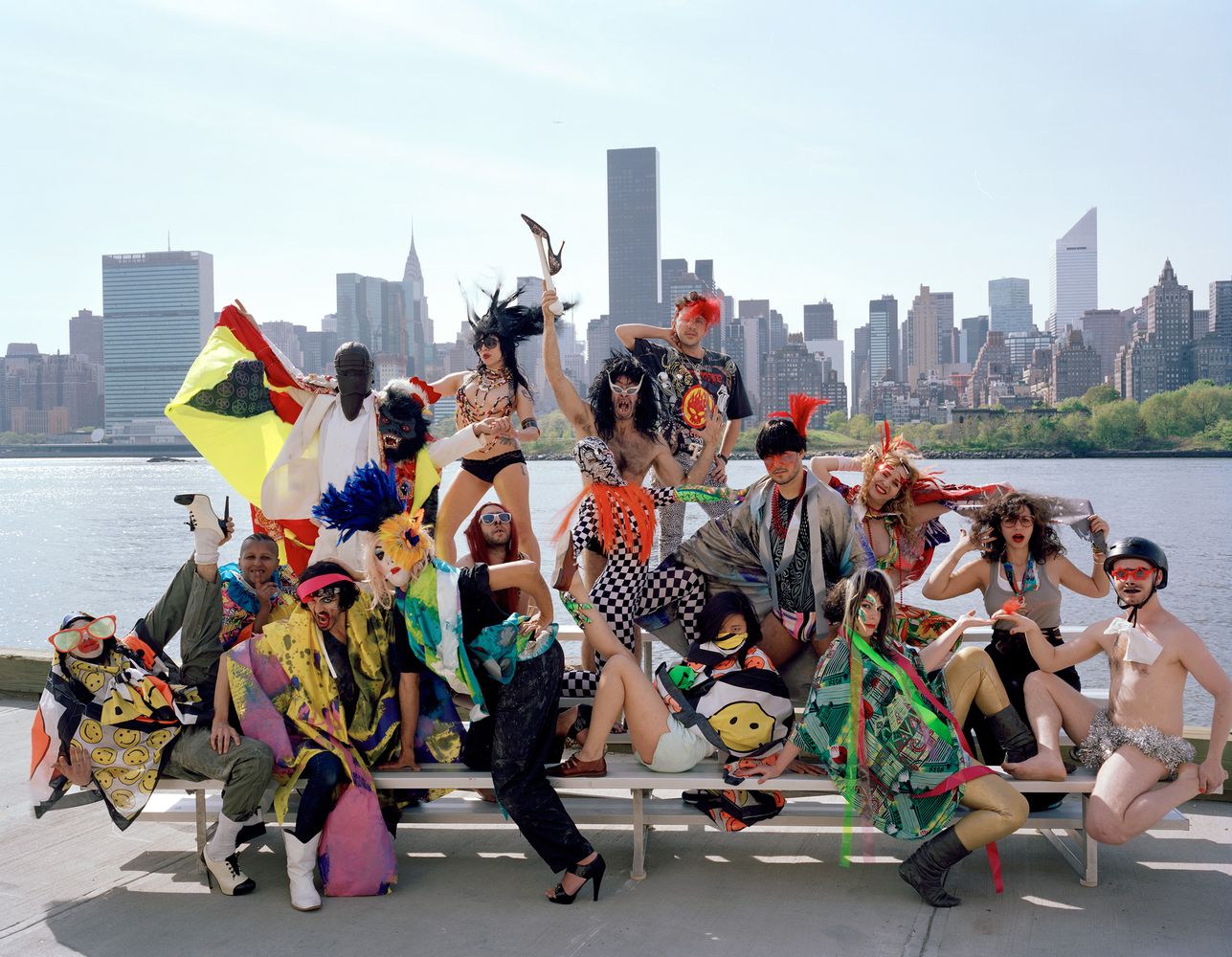I. Cosmological Opening — 2008 / The Collective Body
The earliest coordinates of the Serpentine Ellipse emerge not from the painter’s studio but from the volatile stage of performance — New York, Long Island City, 2008. Within Absolutely Venomous, Accurately Fallacious, Naturally Delicious at Deitch Projects, a collective body erupted into being: the queer tropic swarm of assume vivid astro focus (avaf) , of which Rodrigo Garcia Dutra was part. Masks, make-up, wigs, and fragmentary geometries merged in a scene of ecstatic disorientation.
The camera did not document; it witnessed. The group’s exuberance — half carnival, half invocation — channelled a lineage that runs from the baroque excess of Hélio Oiticica to the neon metaphysics of Kenneth Anger. The body, multiplied and mirrored, became a generator of language. Geometry ceased to be Euclidean and became erotic — folding, looping, trembling in the rhythm of dance and dust.
Within that glowing chaos one finds the embryonic code of what, years later, would be called the Serpent Language. It is not coincidence that AVAF’s chromatic delirium echoes in the current mica-covered canvases: the same principle of diffraction, the same joy in multiplicity, persists.

II. Return of the Element — 2015–2025 / Gunpowder, Mica, and Data Dust
If AVAF was the explosion, the return to the studio was the sediment.
Across a decade of combustion, the artist has sought not spectacle but residue — the faint vibration that remains after fire.
In the exhibition Gunpowder and Abstraction 2015–2025 (White Cube, London), Cai Guo-Qiang revisits his method of controlled detonation — a dance between destruction and creation, chance and control. Rodrigo’s own practice inhabits a parallel but inverse trajectory: instead of igniting the surface, he listens to its ashes. Where Cai’s explosions disperse, Rodrigo’s pigments condense; where Cai stages the sublime of volatility, Rodrigo cultivates the intimacy of molecular memory.
The mica — that ancient mineral of mirrors — replaces gunpowder as a vehicle of light. Mixed with toddy, ceiling paint, and remnants of everyday life, it produces a low-frequency luminosity: not the burst of the fireworks but the long shimmer of consciousness.
On his studio floor, “data dice” are scattered — the dados semeados no canvas-membrane — traces of algorithmic and personal history alike. Each small square of mica, each reddish blur of Brasília earth, stores information, time, and breath.



Two faces appear — in one of the recent photographs — half formed, almost vegetal. They sprout like nodes of recognition, reminders of earlier collectivities: those same faces painted, masked, and multiplied in 2008. The collective body returns a mineral apparition.
III. The Ellipse of Fire — 2025 / House of Combustion
The ellipse — that ancient orbit of planetary movement — has always haunted Rodrigo’s cosmology. Between 2008 and 2025, it became his model of time: not progress, not repetition, but rotation with difference. Each return brings a mutation.
In House of Combustion, the current cycle, painting no longer represents but metabolises. The studio itself becomes an organism of heat, humidity, and reflection — a chamber where consciousness exchanges energy with matter. Mica, toddy, dust, and data form an autopoietic system of transformation, a living archive of the painter’s metabolism.
Here, the queer geometries of AVAF find their mature echo: the same celebration of excess, now refracted through restraint; the same desire for dissolution, now informed by years of philosophical listening — to Haraway’s sympoiesis, to Lygia Clark’s organic line, to Malevich’s black sun, to the posthuman tenderness of Burle Marx’s gardens.
Rodrigo’s ellipse is not a closed form. It remains open, porous, inhabited by residues, ghosts, and frequencies. It is a topology of regeneration, a visual pedagogy of becoming. Within it, every particle — mica, soil, pigment, algorithm, breath — becomes an interlocutor.
The serpent, once a metaphor of temptation, is now the emblem of continuity.
It is the curve of learning that bends through bodies, through epochs, through media.
Epilogue — Queer Geometry as Cosmological Method
To trace Rodrigo Garcia Dutra’s Serpentine Ellipse is to map a pedagogy of metamorphosis. It begins in the collective body and culminates in the mineral one. It is a practice of queer geometry — a refusal of straight lines, a devotion to folds.
The ellipse is both diagram and prayer.
It shows that abstraction can be captivating and that the remnants of art are more than discarded pieces—they’re a lasting testament.
And in the quiet shimmer of mica, one hears again the echo of the first explosion — not of fire, but of life remembering itself.

Deixe um comentário